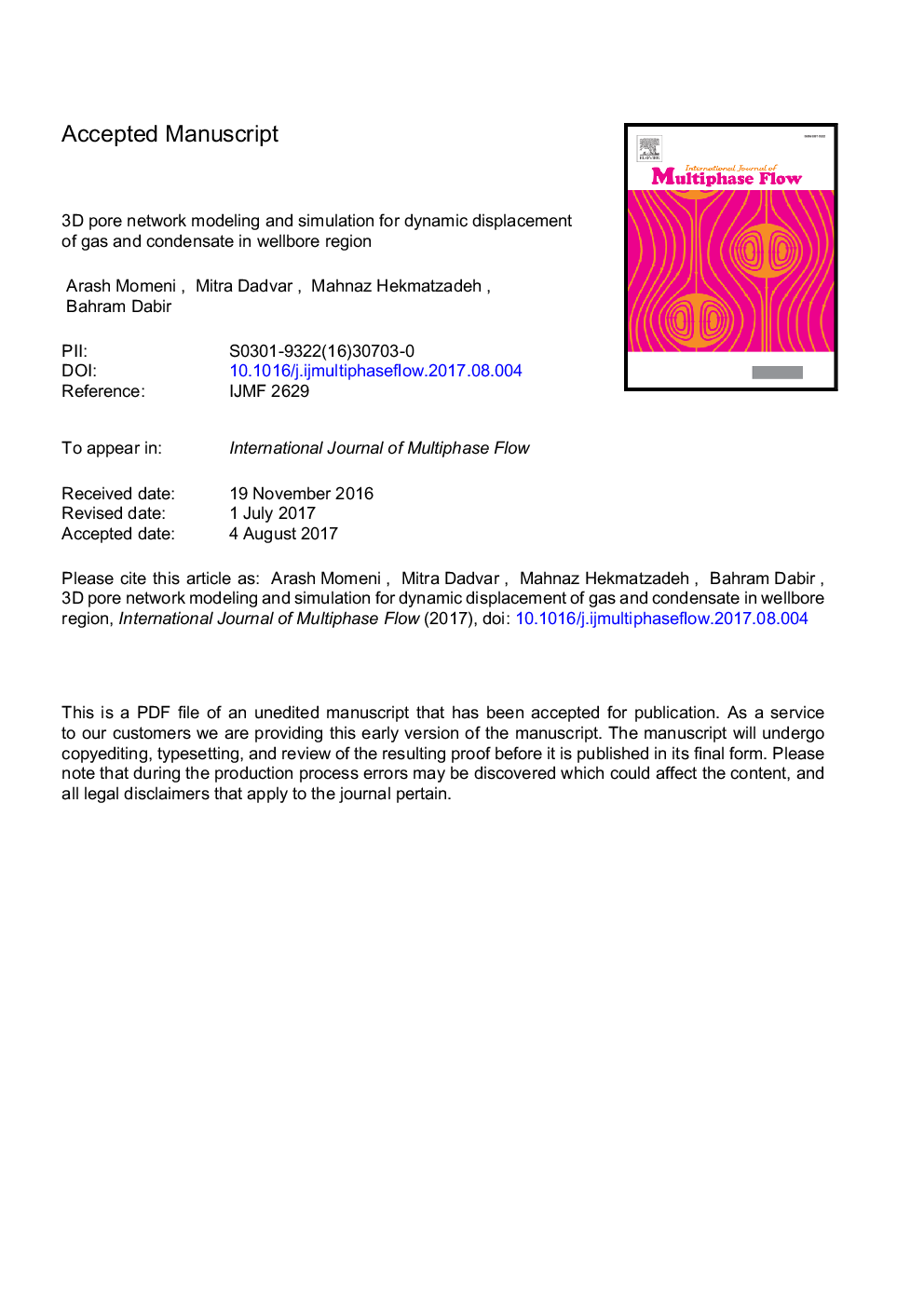| Article ID | Journal | Published Year | Pages | File Type |
|---|---|---|---|---|
| 4994916 | International Journal of Multiphase Flow | 2017 | 19 Pages |
Abstract
Condensate dropout in near a wellbore region in gas condensate reservoir is the main reason of low well deliverability. Many researchers have studied gas and condensate relative permeabilities (RPs) in this region to find the condition for better deliverability. It is known that RP is a function of capillary number in low interfacial tension (IFT) systems such as gas-condensate. The positive dependency of RPs to velocity which is referred to as "positive coupling effect" is related to the simultaneous flow of gas and condensate associated with intermittent opening and closure of channels in porous media. The negative dependency of RPs to velocity named "negative inertia" is due to non-Darcy high-velocity flow. In this study, a 3D pore network modeling is developed to investigate fluids distribution in a gas-condense system at a pore scale to find out the effects of IFT and velocity on RPs. A new method is developed that applies a flash calculation in all throats in the network to estimate the amount of accumulated condensate in throats' corners at different time steps. A modified form of Poiseuille's law for polygonal cross-sectional throats is used to find and update pressure field and fluids distribution in the network and to determine the quantity of pushed out condensate from closed throats to neighboring throats. The displacement mechanism is considered to be determined by the volume of displaced phases in throats without applying any correlation. Simulation results indicate that gas and condensate RPs are increased by an increase in velocity. However, RPs sensitivity to velocity is reduced by increasing IFT which is in agreement with previous studies.
Related Topics
Physical Sciences and Engineering
Chemical Engineering
Fluid Flow and Transfer Processes
Authors
Arash Momeni, Mitra Dadvar, Mahnaz Hekmatzadeh, Bahram Dabir,
